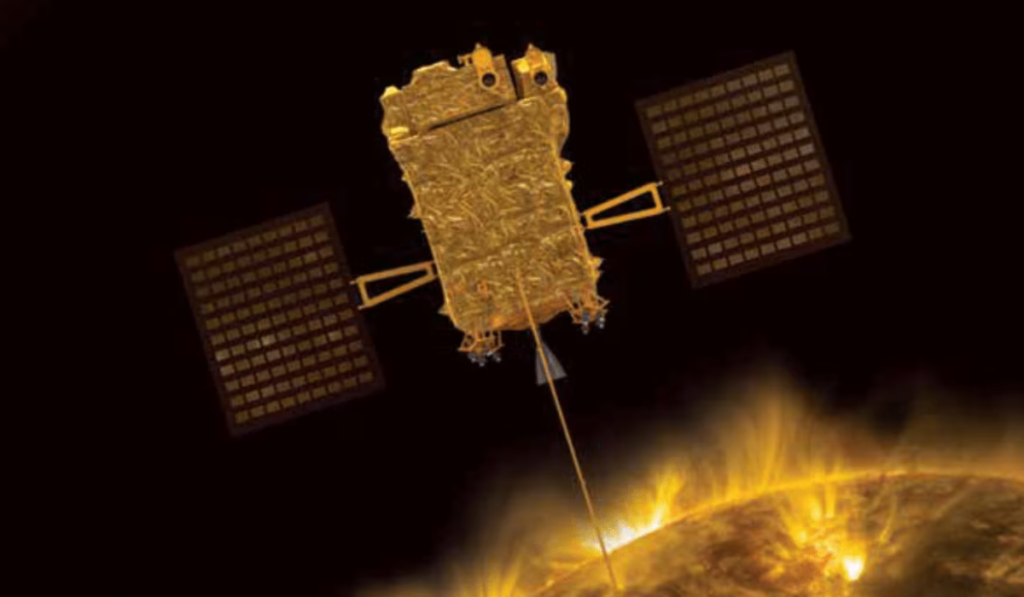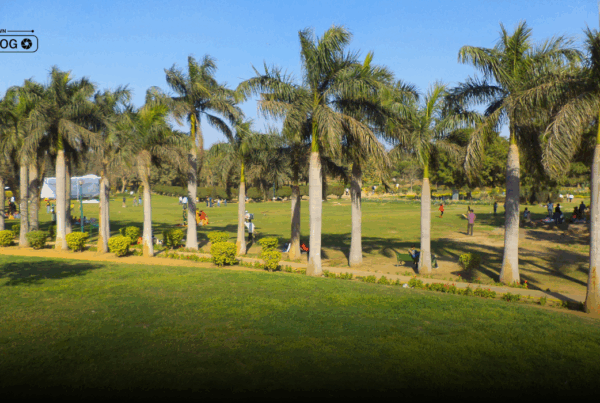In a momentous stride forward, India is primed to embark on its inaugural space odyssey, the Aditya L1 mission, dedicated to probing the enigmatic sun. This endeavor follows the historic feat of Chandrayaan-3, India’s spacecraft that gracefully touched down on the southern extremity of the Moon. The scheduled launch date is earmarked for the 2nd of September, a date eagerly anticipated. The principal aim of this upcoming voyage is to meticulously study solar activities and comprehensively decipher their intricate dance within the realm of space weather. The journey of discovery awaits, and as the countdown commences, we invite you to stay closely connected with TOI, your source for all forthcoming updates.
The Space weather
Space weather encompasses the dynamic shifts in environmental conditions that transpire in the expanse surrounding Earth and neighboring planets. The Sun’s continuous influence permeates the cosmos, emitting radiation, warmth, and an unending stream of particles entwined with magnetic fields. This ceaseless stream of solar particles, recognized as the solar wind, predominantly consists of high-energy protons. The solar wind pervades virtually all the available space within the expansive domain of our solar system. Simultaneously, the solar magnetic field extends its reach across this cosmic realm. In collaboration with the solar wind, explosive solar events like Coronal Mass Ejections (CMEs) significantly shape space’s attributes. Amidst these events, the magnetic field’s nature and the presence of charged particles in proximity to celestial bodies undergo transformation. On Earth, the interaction of our magnetic field with CMEs can spark nearby magnetic disturbances. These occurrences possess the capacity to influence the operational integrity of spatial assets.
Why ISRO wants to study the Sun?
Nearness to Earth: The sun, being the closest star, offers an opportunity for more comprehensive study compared to distant stars.
Enigmatic Sun:. Studying the Sun’s intricacies offers insights into stars in our Milky Way and beyond, spanning diverse galaxies.
The sun exhibits numerous eruptive occurrences and releases vast quantities of energy throughout the solar system. If directed toward Earth, these explosive solar events can cause various disruptions in the nearby space.
Diverse spacecraft and communication systems are susceptible to such perturbations. Hence, receiving early alerts about such events becomes crucial in order to preemptively implement corrective actions. Furthermore, in the event that an astronaut is directly exposed to such explosive phenomena, their safety would be in jeopardy.
The sun’s array of thermal and magnetic events reaches extremes. As a result, it serves as a natural lab, unveiling insights unattainable in controlled settings.
Key facts about the Sun
- The sun holds the distinction of being not only the nearest star but also the largest entity within our solar system. It presents itself as a luminous sphere radiating with the brilliance of hydrogen and helium gases.
- Age of the Sun: With an estimated age of approximately 4.5 billion years, the sun stands as a testament to time’s passage.
- Earth-Sun Distance: Spanning a distance of around 150 million kilometers, the sun’s proximity to Earth serves as the fount of energy for our entire solar system. The sustenance of life on Earth hinges upon this solar energy, as it is the fundamental driving force. Furthermore, the sun’s gravitational influence acts as a cohesive thread, binding together all elements within our celestial domain.
- Sun’s Components: Deep within the sun’s central core, temperatures surge to an astonishing 15 million degrees Celsius. Within this searing crucible, the process of nuclear fusion unfurls, bestowing the sun with its formidable power. In contrast, the sun’s outward facade, the photosphere, showcases a relatively cooler demeanor, its surface temperature resting at approximately 5,500 degrees Celsius. This visible layer is a fascinating window into the sun’s captivating essence.
When and where to watch India’s maiden solar mission
ISRO is set to initiate its solar expedition, Aditya-L1, on Saturday, September 2nd. The event will be broadcasted live on both the Doordarshan channel and ISRO’s official YouTube channel. Multiple other news channels are also poised to air the live coverage of the Aditya-L1 Mission. The launch is scheduled for 11:50 am (IST) on the 2nd of September.
What are Lagrange points
Aditya-L1 has been strategically mapped to orbit within a halo formation around the Lagrangian point 1 (L1) within the Sun-Earth interplay. This specific point is situated at a considerable distance of approximately 1.5 million kilometers from Earth.
Lagrangian Points: These are distinct positions in space where a petite object, once stationed, tends to maintain its position. In the context of a two-body system like the Sun and Earth, these spatial positions can be exploited by spacecraft to conservatively hold their stance with minimized fuel consumption.
Precisely at a Lagrange point, the gravitational forces exerted by the two prominent bodies are in equilibrium with the essential centripetal force necessary for a diminutive entity to coalesce with their motion. Within the realm of gravitational interactions involving two bodies, five Lagrange points exist, denoted as L1, L2, L3, L4, and L5. L1, positioned along the Sun-Earth axis, finds itself of particular significance. Its proximity to Earth amounts to merely about 1% of the Earth-Sun distance.
Duration of ISRO’s solar mission

ISRO is planning to situate the spacecraft in an orbital path known as a “halo orbit,” encircling Lagrange point 1 (L1) within the Sun-Earth configuration. This specific point resides at an approximate distance of 1.5 million kilometers from Earth.
The designated mission location is the destination for a journey that spans an impressive 1.5 million kilometers from Earth. They project that the journey will take approximately four months to complete.
ISRO completes launch rehearsal, vehicle internal checks
ISRO has officially verified the successful culmination of the launch rehearsal for India’s solar expedition, Aditya-L1.
In a statement, ISRO conveyed, “Preparations for PSLV-C57/Aditya-L1 Mission are advancing as planned. They have concluded the launch rehearsal, which included meticulous assessments of the vehicle’s internal components.”
Role of 6 payloads of spacecraft
The Aditya-L1 Mission incorporates seven distinct payloads, each assigned a specific role:
- Corona/Imaging & Spectroscopy: This payload is dedicated to imaging and spectroscopic analysis of the solar corona.
- Photosphere and Chromosphere Imaging – Narrow & Broadband: Focusing on the photosphere and chromosphere, this payload employs both narrow and broadband imaging techniques.
- Soft X-ray Spectrometer: Sun-as-a-Star Observation: Designed for observing the sun as a star, this payload employs a soft X-ray spectrometer.
- Hard X-ray Spectrometer: Sun-as-a-Star Observation: Similar to the previous payload, this one specializes in sun-as-a-star observations using hard X-ray spectroscopy.
- Solar Wind/Particle Analyzer Protons & Heavier Ions with Directions: This payload has the task of analyzing solar wind particles, specifically protons and heavier ions, and determining their directions.
- Solar Wind/Particle Analyzer Electrons & Heavier Ions with Directions: Similar to the previous payload, this one focuses on solar wind particles, encompassing both electrons and heavier ions, while ascertaining their directions.
Key features of spacecraft
Live Coverage of Aditya L1 Mission: The spacecraft boasts a complement of seven cutting-edge payloads meticulously designed to dissect distinct strata of the Sun, including the photosphere, chromosphere, and corona. These seven payloads are as follows:
- Visible Emission Line Coronagraph (VELC): Crafted to capture visible emission lines, this payload contributes to corona analysis.
- Solar Ultraviolet Imaging Telescope (SUIT): This payload specializes in capturing ultraviolet images of the Sun, providing insights into its various layers.
- Solar Low Energy X-ray Spectrometer (SoLEXS): Geared towards analyzing low-energy X-rays, this payload aids in delving into solar phenomena.
- High Energy L1 Orbiting X-ray Spectrometer (HEL1OS): Positioned at the L1 point, this payload focuses on high-energy X-rays and enables in-depth observations.
- Aditya Solar Wind Particle Experiment (ASPEX): Dedicated to analyzing solar wind particles, including their energy distribution.
- Plasma Analyser Package for Aditya (PAPA): This payload conducts plasma analysis, contributing to our understanding of solar dynamics.
- Advanced Tri-axial High Resolution Digital Magnetometers: These advanced magnetometers help us grasp the intricate magnetic characteristics of the Sun.
https://twitter.com/isro/status/1696097793616793910
ISRO Aditya L1 mission launch timing
ISRO has officially declared the commencement of the PSLV-C57/Aditya-L1 Mission, scheduled for Saturday at 11:50 am (IST), launching from the Satish Dhawan Space Centre (SDSC-SHAR) situated in Sriharikota, Andhra Pradesh.
Science Objectives:
The major science objectives of Aditya-L1 mission are:
- Study of Solar upper atmospheric (chromosphere and corona) dynamics.
- Study of chromospheric and coronal heating, physics of the partially ionized plasma, initiation of the coronal mass ejections, and flares
- Observe the in-situ particle and plasma environment providing data for the study of particle dynamics from the Sun.
- Physics of solar corona and its heating mechanism.
- Diagnostics of the coronal and coronal loops plasma: Temperature, velocity and density.
- Development, dynamics and origin of CMEs.
- Identify the sequence of processes that occur at multiple layers (chromosphere, base and extended corona) which eventually leads to solar eruptive events.
- Magnetic field topology and magnetic field measurements in the solar corona .
- Drivers for space weather (origin, composition and dynamics of solar wind .
Conclusion
As India sets its sights on the pioneering Aditya L1 Mission, a new chapter in space exploration unfolds. With its focus on deciphering the enigmatic sun, this mission promises a deeper understanding of our celestial neighbor’s dynamics and its profound influence on our solar system. Building on the legacy of Chandrayaan-3’s lunar touchdown, Aditya L1 embarks on a journey to unravel the secrets of our sun’s intricate dance within the realm of space weather. As the countdown to launch commences, stay tuned for the unfolding saga of discovery.
FAQs
Why does ISRO want to study the Sun?
India’s proximity to the sun provides a unique opportunity for comprehensive study, shedding light not only on our own star but also enhancing our knowledge of stars within our galaxy and beyond.
What is space weather?
Space weather encompasses the ever-changing environmental conditions in the vicinity of Earth and other planets, influenced by phenomena like solar radiation, solar wind, and magnetic fields.
What are Lagrange points?
Lagrange points are stable positions in space where the gravitational forces of two large bodies, like the Sun and Earth, create equilibrium. Aditya-L1 orbits around Lagrange point 1 (L1), approximately 1.5 million kilometers from Earth.
How long is the Aditya L1 mission journey?
The voyage to Aditya-L1’s orbit around L1, about 1.5 million kilometers from Earth, will span approximately four months.
What are the scientific objectives of the Aditya L1 mission?
The Aditya L1 mission targets sun’s layers, studying dynamics, heating, and magnetic fields. It also seeks to contribute to our knowledge of space weather and its impacts.
When and where can I watch the launch of Aditya L1 Mission?
The Satish Dhawan Space Centre (SDSC-SHAR) in Sriharikota, Andhra Pradesh, will host the launch on Saturday, September 2nd, at 11:50 am (IST). Live coverage will be available on the Doordarshan channel and ISRO’s YouTube channel, along with other news channels.
How many payloads does the Aditya L1 spacecraft carry?
The Aditya L1 spacecraft carries seven advanced payloads, designed to analyze Sun’s layers including corona, chromosphere, and photosphere.
What are some key features of the Sun?
Our nearest star, the Sun, shines as a luminous sphere primarily composed of hydrogen and helium gases. It radiates energy, maintaining life on Earth, and its extreme temperatures and nuclear fusion processes power its immense energy output.








